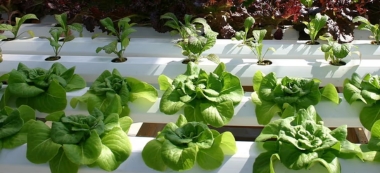- Courses
- GS Full Course 1 Year
- GS Full Course 2 Year
- GS Full Course 3 Year
- GS Full Course Till Selection
- Answer Alpha: Mains 2025 Mentorship
- MEP (Mains Enrichment Programme) Data, Facts
- Essay Target – 150+ Marks
- Online Program
- GS Recorded Course
- Polity
- Geography
- Economy
- Ancient, Medieval and Art & Culture AMAC
- Modern India, Post Independence & World History
- Environment
- Governance
- Science & Technology
- International Relations and Internal Security
- Disaster Management
- Ethics
- NCERT Current Affairs
- Indian Society and Social Issue
- NCERT- Science and Technology
- NCERT - Geography
- NCERT - Ancient History
- NCERT- World History
- NCERT Modern History
- CSAT
- 5 LAYERED ARJUNA Mentorship
- Public Administration Optional
- ABOUT US
- OUR TOPPERS
- TEST SERIES
- FREE STUDY MATERIAL
- VIDEOS
- CONTACT US
Tripura Advances Large-Scale Hydroponics to Boost Sustainable Farming
Tripura Advances Large-Scale Hydroponics to Boost Sustainable Farming

- Tripura, a state in northeastern India, is making great progress in improving its agriculture by adopting large-scale hydroponic farming.
- This shift from small, portable systems to bigger, commercial setups is expected to provide farmers with more sustainable and profitable opportunities.
- It will also help address some challenges of traditional farming, while improving agricultural resilience and food security in the state.
What is Hydroponics Farming?

Hydroponics is a farming method where plants grow in nutrient-rich water instead of soil. This approach is gaining popularity because it offers a more efficient and sustainable way to grow crops.
Key Benefits of Hydroponics:
- Water Efficiency: Hydroponic farming uses up to 90% less water than traditional farming because the water is reused in the system.
- No Pesticides: There is less need for chemical pesticides, which means healthier crops and less harm to the environment.
- Space Optimization: It can be practiced in small spaces, such as rooftops or urban areas, making it ideal for places with limited land.
- Climate Resilience: Hydroponics is less affected by extreme weather like floods or droughts, which makes it more reliable for stable crop production.
- Higher Yields: Plants tend to grow faster and more efficiently, leading to higher crop yields.
Applications of Hydroponics:
- Urban Farming: Helps reduce the distance food travels from farm to table, cutting down transportation costs.
- Climate-Vulnerable Regions: Ideal for areas where water is scarce or where extreme weather is common.
- High-Value Crops: Especially good for crops like lettuce, strawberries, and herbs, which require specific growing conditions.
Key Features of Tripura's Hydroponic Farming Initiative
Tripura is taking a major step forward by expanding its use of hydroponic farming to large-scale systems to help farmers grow more food and improve their income.
-
Transition to Larger Hydroponic Systems:
- The state is moving from small, portable systems to larger commercial setups, with farms covering at least 500 square meters. This will allow farmers to increase production and reduce costs by working on a bigger scale.
- Pilot Project: A 560-square-meter hydroponic unit has already been set up, focusing on growing high-demand crops like lettuce, coriander, strawberries, and marigolds.
- Investment: The setup of such a system requires an initial investment of about Rs. 55 lakh, but the returns are expected to be good in the coming years.
-
Sustainability and Environmental Impact:
- Water Conservation: Since hydroponic systems recycle water, they use much less water than traditional farming, which is especially important in a state like Tripura that can face water shortages.
- No Soil, No Pollution: Without soil, these systems reduce soil degradation and minimize the use of harmful chemicals, making farming more environmentally friendly.
- Efficient Land Use: Hydroponics, especially when combined with vertical farming, can make better use of the available land, which is useful in places with limited cultivable land.
-
Economic Benefits:
- Profitability: Larger hydroponic systems are expected to help farmers meet the growing demand for fresh produce, leading to higher income and better profits.
- Market Access: With larger setups, farmers can reach broader markets and improve their business prospects, both locally and regionally.
-
Climate Resilience:
- These hydroponic systems can withstand extreme weather events, like floods, which are becoming more common in Tripura due to climate change. This makes the agricultural system more resilient and less vulnerable to natural disasters.
Benefits of Hydroponic Farming in Tripura
- Water Conservation: With water being recycled in hydroponic systems, these setups use much less water than traditional farming, which is important for Tripura, especially during dry spells when water is scarce.
- Reduced Use of Chemicals: Since hydroponic farming involves fewer chemicals, it helps in producing healthier crops and less pollution of the environment.
- Higher Crop Yields: Because the growing conditions are carefully controlled, hydroponics leads to faster plant growth and higher yields compared to traditional farming.
- Efficient Land Use: Hydroponic farming, especially when combined with vertical farming, can maximize productivity even in small spaces, helping farmers make the most out of the limited land available in Tripura.
- Diverse Crop Production: Farmers can grow high-demand crops like lettuce, strawberries, and marigolds, which are more profitable and have strong market demand, leading to increased income.
Challenges and Considerations
- High Initial Costs: Setting up large hydroponic systems can be expensive. For example, a 560-square-meter unit costs about Rs. 55 lakh, which might be a barrier for small farmers who don’t have enough capital.
- Technical Knowledge: Hydroponic farming requires specialized skills in managing things like nutrient solutions, pH levels, and creating the right environment for plants. Farmers will need additional training to run these systems effectively.
- Adaptation to Local Conditions: While hydroponics is resilient to some weather conditions, it is important to adapt the systems to Tripura’s specific climate and local farming conditions to ensure success.
Government Support and Financial Aid
The Tripura government is helping farmers with the transition to hydroponic farming by providing:
- Financial assistance and incentives to encourage the adoption of hydroponics.
- Financial aid packages for farmers who have been affected by natural disasters, like floods.
- This is part of the government’s broader agricultural resilience strategy, aiming to modernize farming and reduce dependence on traditional methods, which are becoming increasingly vulnerable to climate-related challenges.
Conclusion: A Step Towards Sustainable and Profitable Agriculture
Tripura’s shift to large-scale hydroponic farming is an exciting development for the state’s agriculture. By focusing on sustainability, climate resilience, and profitability, this initiative is expected to transform farming practices, improve food security, and enhance the livelihoods of farmers. With proper support and investment, hydroponics could become a key part of Tripura’s agricultural future, offering new opportunities in the face of climate change and environmental challenges.
|
Also Read |
|




